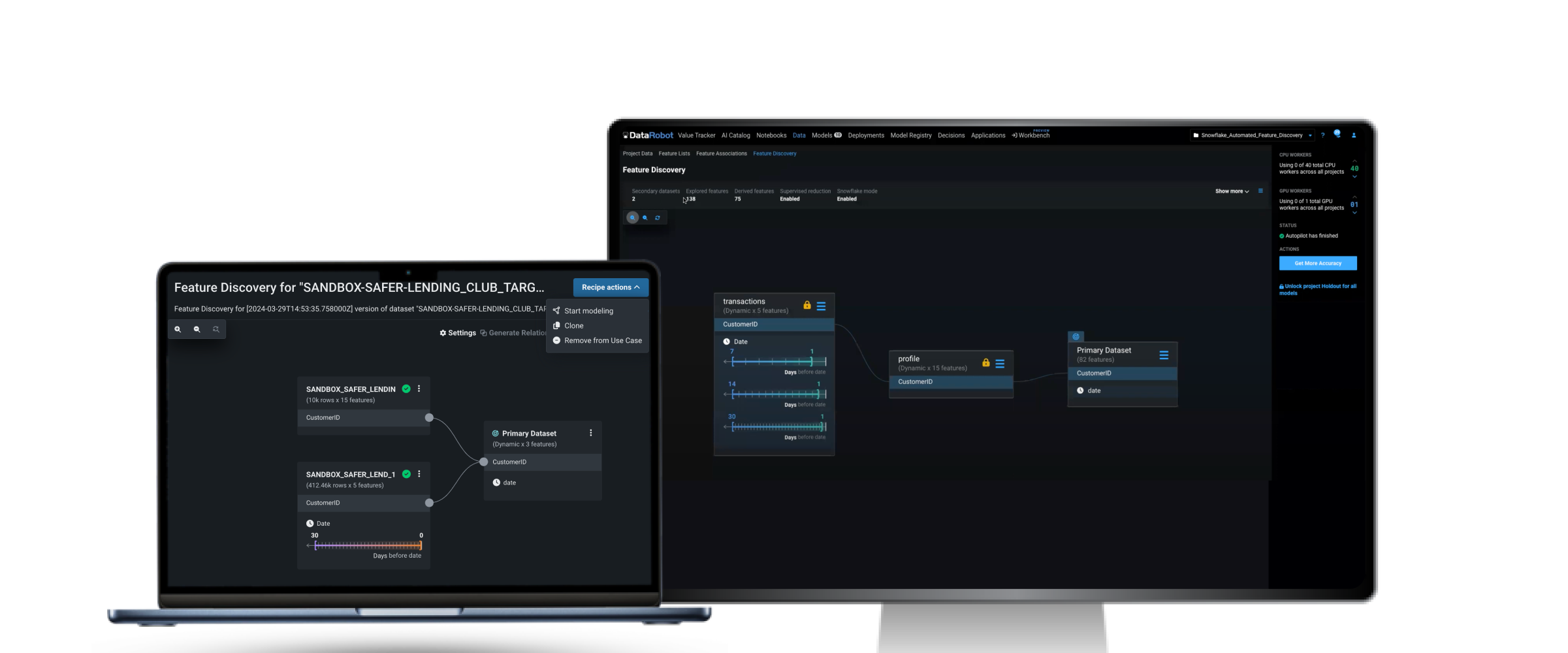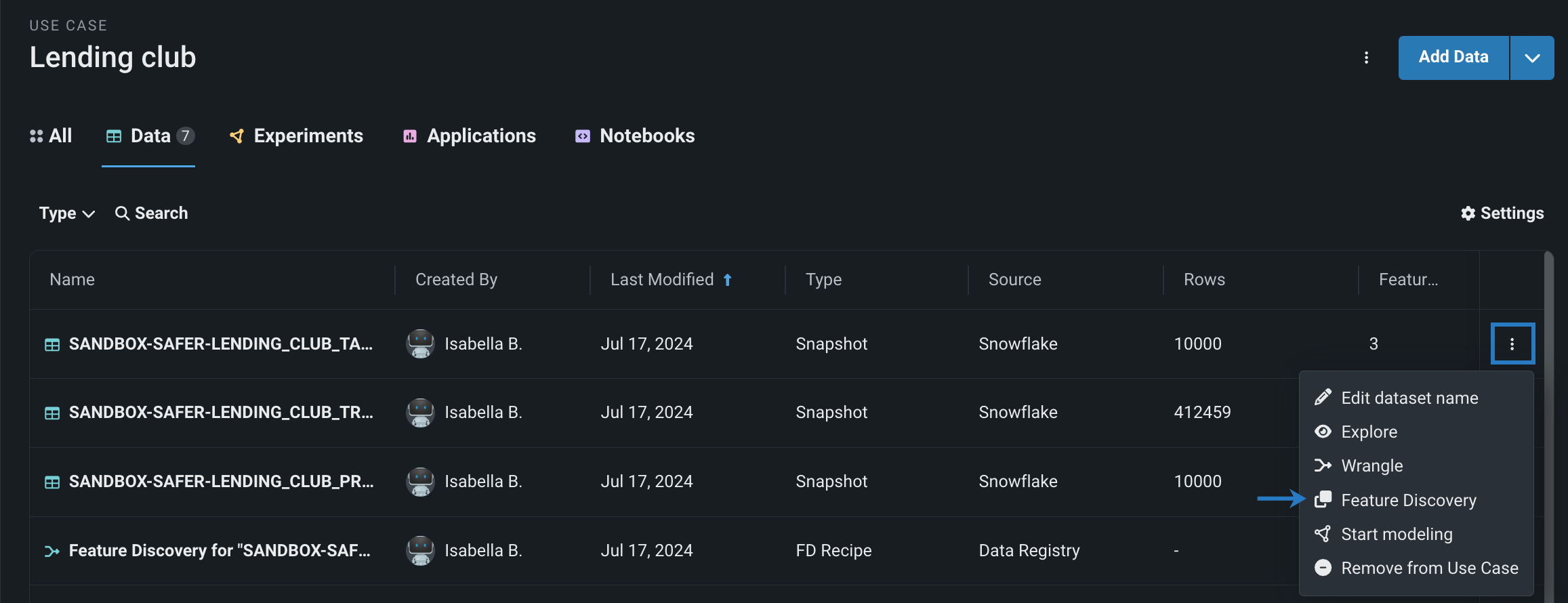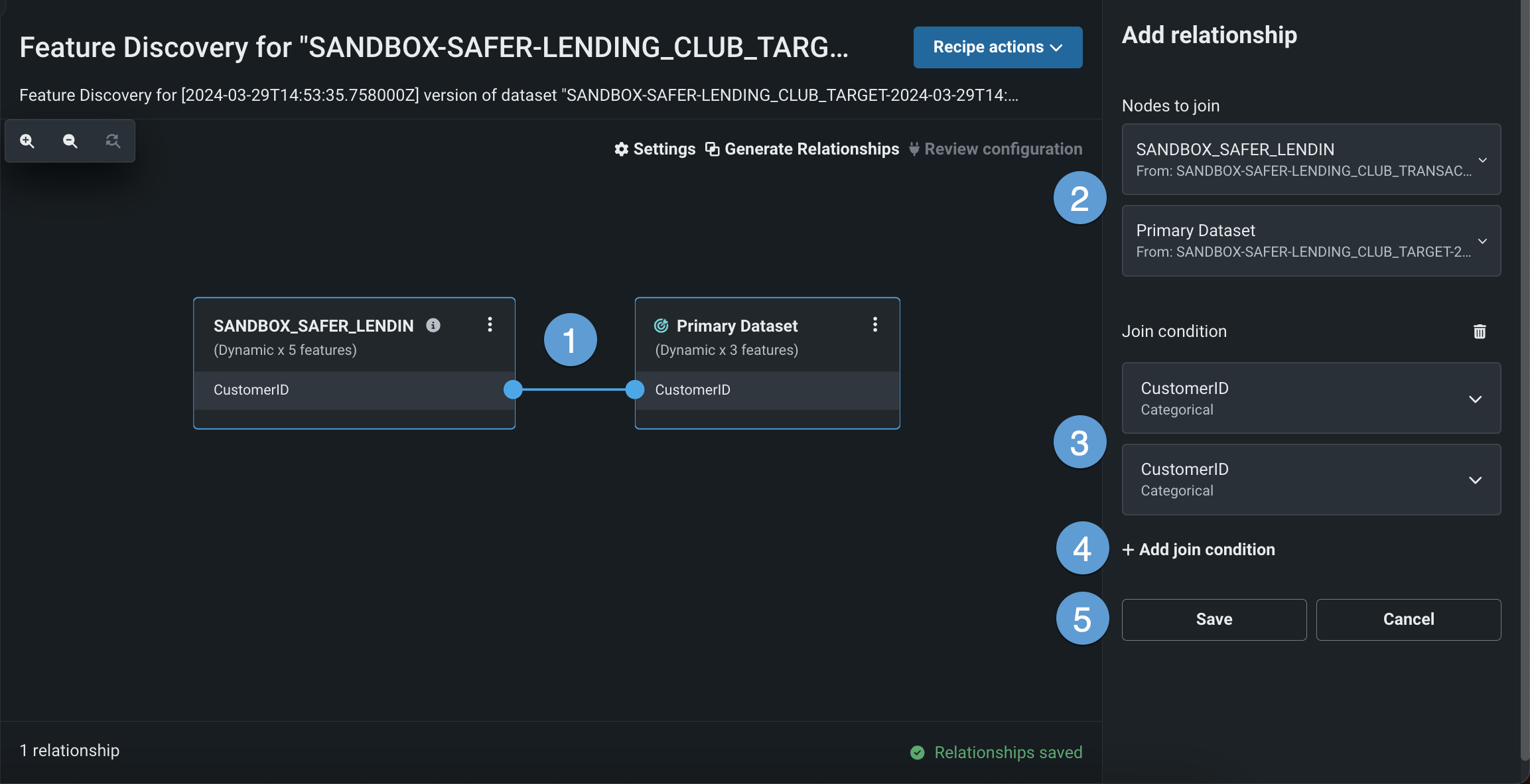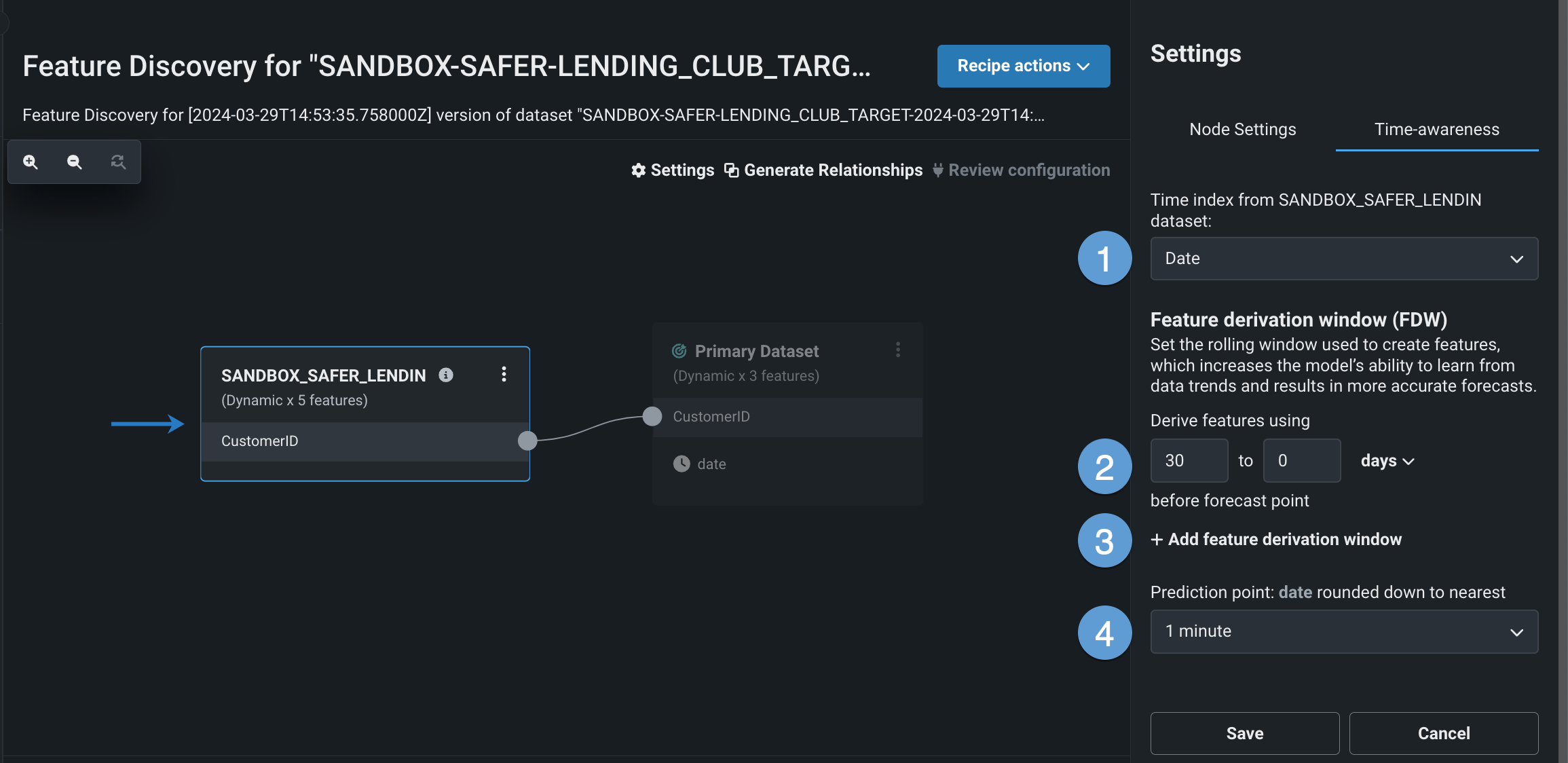
Feature Discovery is a powerful capability that enables enterprises to unlock the full potential of their AI deployments by discovering and generating new features across multiple datasets. Traditional data often lacks the required features for building high-performing predictive models, requiring time-consuming manual feature engineering. Feature Discovery automates this process, consolidating datasets and uncovering meaningful relationships to enhance model accuracy and efficiency. By eliminating manual feature engineering, it empowers organizations to scale AI initiatives with ease and consistency.

Contribution
Lead UX Designer
Target Users
Data Scientists, Data Engineers, and AI Specialists
Products
DataRobot's Workbench: Automated Feature Engineering for Smarter, Faster AI Model Development
Outcome
By automating feature engineering, Feature Discovery accelerates the AI development lifecycle, reducing the time and effort required to prepare datasets. Organizations achieve higher-quality predictive models by accessing more relevant and sophisticated features, ultimately leading to improved decision-making and operational efficiency.
The Feature Discovery tool streamlines feature generation by identifying and creating relevant features from primary and secondary datasets.
Define relationships between datasets with flexible configuration options within the Feature Discovery recipe.
Flexibility and Efficiency of Use through customizable relationship mapping and quick-access templates for common dataset configurations.

Scalable resource allocation enables admins to configure additional compute resources for large datasets.
Recognition Over Recall through visual resource utilization indicators and predictive resource recommendations based on dataset characteristics.

Implemented an interactive graph visualization to help users understand complex feature relationships and dependencies, reducing cognitive load during feature selection.
Designed a step-by-step workflow that guides users through the feature discovery process, ensuring all necessary configurations are completed before execution.
Added real-time performance impact visualization to help users make informed decisions about feature selection and configuration.
Turning complex data preparation into a clear, guided user experience.

I designed the interface to support a wide range of users — from business analysts to data scientists — by allowing them to start simple and gradually explore more advanced options. Instead of overwhelming users with configuration upfront, the flow reveals complexity only when it's needed. This helped users get started faster while still offering full control to those who needed it.
The interface uses visual hierarchy and interaction patterns to help users quickly understand how datasets relate and what impact those relationships have. Through spatial layouts and interactive previews, users can explore and validate features more confidently, even in high-dimensional data scenarios.
Helping users uncover hidden insights by making data relationships tangible.

To make complex joins more approachable, I introduced smart defaults that detect common relationships and pre-fill join conditions. This reduces friction while keeping the logic transparent. Users can accept suggestions or make adjustments as needed — the goal was to give them confidence in the system without hiding the details.
Rather than sending users off to documentation, I embedded inline tips and adaptive cues based on the current task and dataset. The interface anticipates where users might get stuck and offers just enough guidance to keep them moving — whether they’re defining a relationship or optimizing it for time-aware modeling.
Revealing patterns over time to support more accurate predictions.

For time-series modeling, I focused on surfacing temporal context through design — making it easy to anchor relationships to time, preview time-aware joins, and understand how data evolves. The design supports both technical accuracy and user intuition, especially in domains where timing can make or break a prediction.
The time-aware configuration doesn’t feel like a separate step — it’s built into the natural flow of defining dataset relationships. The design encourages experimentation without breaking momentum, which was key to helping users adopt more advanced modeling techniques without needing deep expertise.
Reduces time and effort required for data preparation and feature engineering.
Improves predictive accuracy through automated feature discovery and optimization.
Discover other innovative solutions in data management and user experience design.
View All Projects